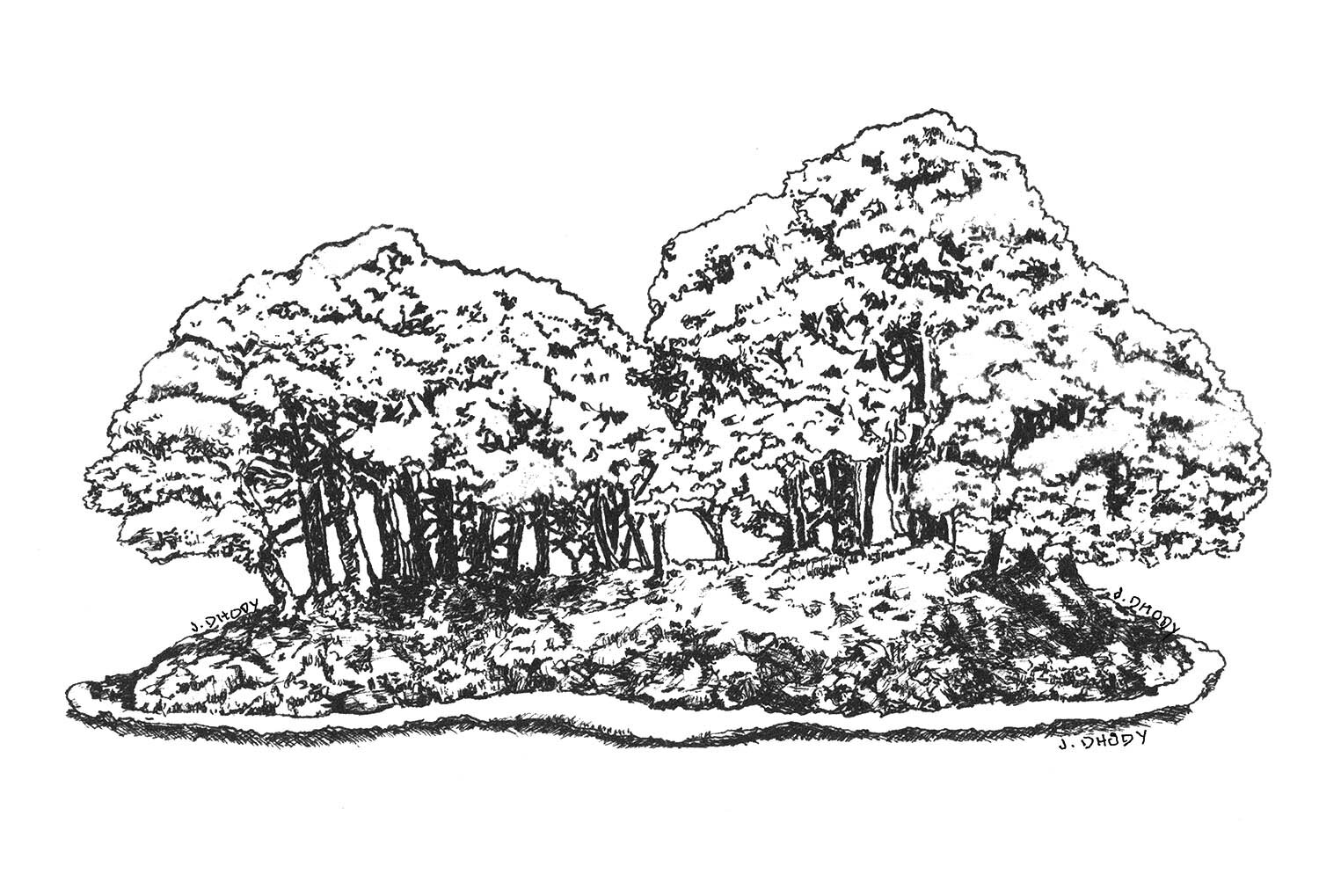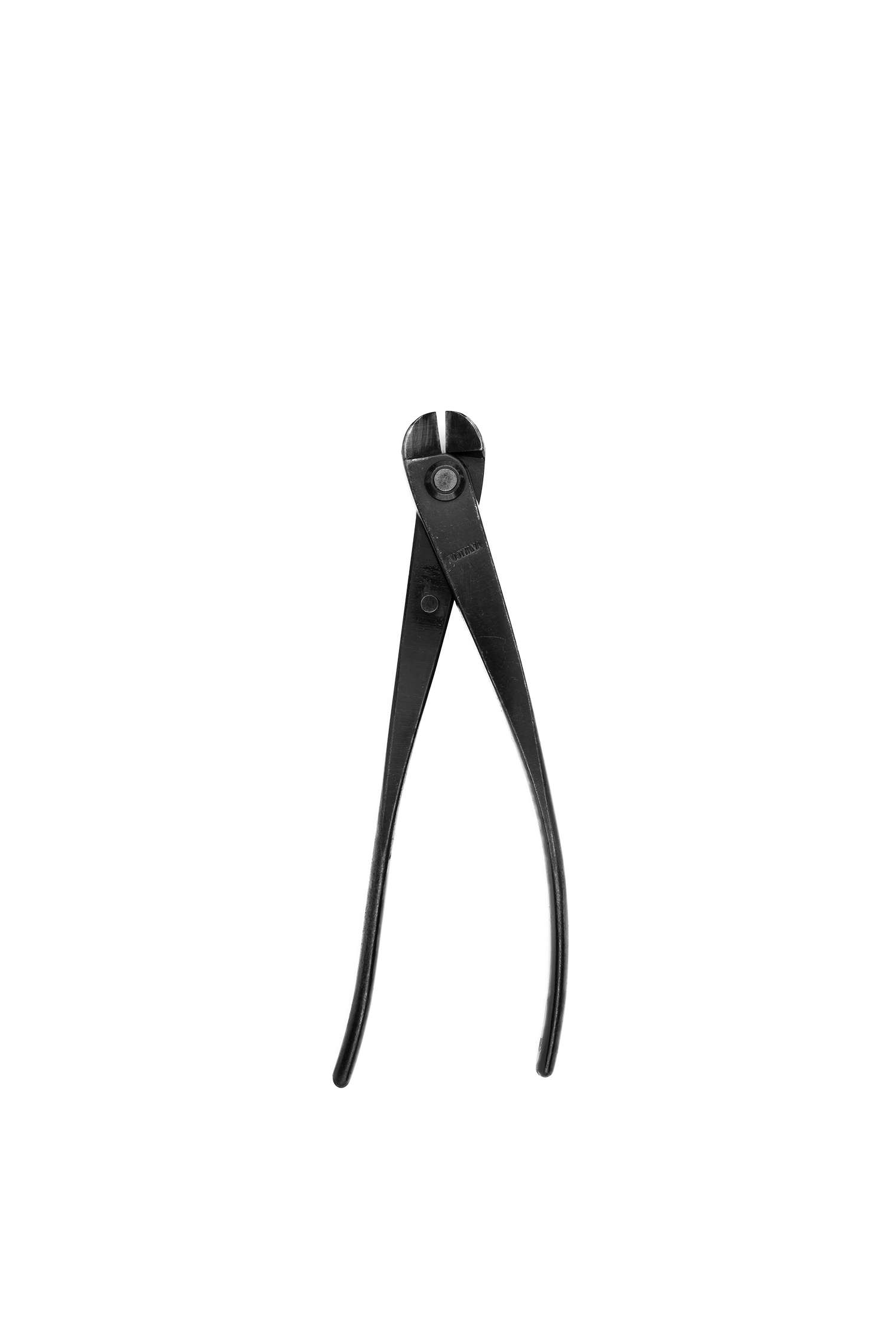What is Bonsai?
The word bonsai is derived from two Chinese characters, meaning a tree planted in a shallow container. The word is pronounced "bone-sigh"
Bonsai is an art form that is composed partly of horticulture and partly three-dimensional design. To qualify as a bonsai, the growing miniature tree must be both a representation of nature and creative expression.
Bonsai can be a philosophical experience, a means for feeling the spiritual harmony between man and nature.
The world history of bonsai is extensive, originating 1700 years ago in China with collected mountain trees. Other ancient civilizations have grown container plants, but no one has as much documented historical background in artistic pot plants-penjing-(the Chinese counter- part of bonsai) and horticultural practices as China. With the parallels of eastern culture, especially religion, Japan borrowed potted tree culture some 800 years ago. The Japanese began to change the craft by altering and improving the design perspective through observing the forms and characteristics of trees in nature. As a result, the Japanese elevated potted tree culture to the art we enjoy today.
A bonsai is not a mystery -- it is a challenge...to turn a tree into a bonsai, you must heavily prune its branches and roots, and pot it in a container that fits the overall design. The size of the bonsai is maintained by seasonal trimming of new growth and periodic root pruning and repotting. Most bonsai must live outdoors in the same elements as their gigantic siblings. In temperate zones, tropicals and sub-tropicals are adaptable to indoor conditions. During the growing season almost all trees should be kept outdoors.
The most common question about bonsai is "How old is it?", but a bonsai can be any age. Since the techniques are meant to develop and emphasize age, the actual age of a tree is not important- . Ask instead. "How old does the tree look?".
Why are bonsai shaped differently?
Bonsai are designed as the result of observations of trees in their natural state. Trees grow in an infinite number of shapes. To classify bonsai, you have to ask several questions: Is the bonsai composed of one trunk or several trunks? What definition will you give to the base, form, and trunk direction? Is the tree rooted firmly, or growing on a rock or with exposed roots? Is the trunk straight, curved, or multiple? Does the tree stand upright,slant, or cascade?
Formal
A single upright truck that tapers toward the top
Informal
A single upright trunk with well balanced curves. The top usually bends toward the front.
Semi or full cascade
A single arching or cascading trunk either severely slanted or extending below the container.
Group or Forest
Usually a group of related species representing a miniature landscape.
Free form (literati)
A sparse single upright trunk - straight,slanted, or curved characterized by a tasteful, simple elegance.
Other bonsai styles: slanting, broom, windswept, multiple trunk (twin, triple, or clump), and rock planting (on, in, or over a rock). Deserving special classification based on size is the miniature (Shohin) bonsai (less than 10 inches).
How can I obtain bonsai material?
Nursery Stock:
containerized plants from a general nursery.
pre-trained plants from a specialized nursery or mail order.
Propagation:
seed/seedling
grafting
cutting
layering
Finished bonsai:
ready-made.
Collected trees:
gathered material from the wild.
What material is suitable for bonsai?
There are two basic types of bonsai material.
Outdoor plants that require a cold dormancy period:
juniper
maple
azalea
apple
pine
elm
spruce
larch
Indoor plants that cannot be allowed to freeze:
fig
natal plum
citrus
serissa
jade
myrtle
gardenia
bougenvalia
How do I create a bonsai?
Elements of design.
Initially, decide which view of the tree to select as the front, to utilize the tree's best aesthetic qualities such as rootage, taper, curvature, and any other interesting features.
Design necessitates planning. Training and styling are synonymous with design. Since bonsai is an art form, certain basic elements of design are used to simplify the process:
Proportion
Proportion is the ratio of the individual parts, including the container in relation to the overall design.
Symmetry
Symmetry is the repetition of the same shape. The most basic shape is the triangle, which also has an oriental philosophical meaning heaven, earth, and man). The repetition of the triangular form can be seen in the tree's overall silhouette and in its branches as perceived from different viewpoints.
Balance
Balance is perceived to be symmetrical. however, a more aesthetically pleasing distribution of mass and voids can be obtained by using an asymmetrical approach.
Front overall silhouette
Top view, branch
Branch profile
“...there is balance in unbalance, and there is symmetry in asymmetry."
John Naka
Training bonsai is an ongoing process
One misconception is that bonsai are mistreated or tortured.
Bonsai are healthy, vigorously growing trees! The healthy condition of these trees makes it possible to prune branches, trim roots, encourage small foliage (needles or leaves), or wire the branches to the desired shape. Often bonsai are grown in the ground or in a larger nursery pot until the desired size is achieved, then placed in a bonsai pot. Training bonsai is an ongoing process.
Concave cutter
Shears
Wire cutter
Chopsticks
Broom
Root hook
Pruning
Analyze the tree and prune branches and foliage to achieve your design in its simplest form. When the foliage area is reduced, you can also reduce the root system, so the tree can live in a shallow pot.
Directional training
Most drastic changes in direction are achieved by winding copper or aluminum wire in a spiral around the branch and bending it to the desired position until the wood sets. Other alternative methods include guy wiring or hanging weights on the branches. A Chinese method called "clip and grow' achieves changes in direction by repeated cuttings.
Container
The limited area of the pot tends to restrict the growth of the tree, and the design of the tree ultimately dictates the shape of the pot. The size of the pot is proportional to the size of the bonsai. The placement of the bonsai in the pot achieves aesthetic balance and harmony.
A bonsai pot is a unique container especially created, using a variety of colors, textures, and shapes to complement each bonsai.
Soil
Bonsai soil is significantly different from other "potting soils". It is often very granular, providing rapid water drainage, good aeration, and substantial weight to anchor the tree. A typical bonsai mixture is made of equal parts of organic, clay, and gravel components. These are sifted to eliminate overly large or dust particles.
How do I care for a bonsai?
The particular horticultural needs of all bonsai are: light, air, water, nutrients and soil
Light - Sunlight is a must for maintaining proper photosynthesis. The amount depends on the species of tree.
Air - Good air circulation is ideal for good health. However, protection must be given from strong winds to avoid breakage and/or dessication
Water - Under optimum light, soil, and air circulation, a bonsai must be watered every day during the growing season.
Nutrients - Provide proper fertilization throughout the growing season with organic (ie. fish emulsion, seaweed extract) or inorganic (chemical) fertilizers.
Pests and Diseases - Bonsai share with other plants an attraction for pests and diseases. An important part of maintenance is observation. Treat the trees only when necessary.
Periodic Pruning - After the bonsai is established and growing, it will need frequent pruning and pinching to maintain its design.
Repotting - To avoid the unhealthy consequences of a root bound tree, you need to repot it periodically. Remove the root mass and prune it, and then add fresh soil. The schedule for repotting depends on the rate of growth of the particular species, from one year to five years.
Winter Care - Winter-hardy (outdoor) species should have a cold dormancy period to maintain good health.Be sure to provide protection from direct sun and drying winds, which can cause moisture loss (dessication). You can use various protected areas such as a cold frame, window well, unheated garage, polyhouse, or mulch bed.
Vacation Care - Maintain the normal bonsai watering routine while you are away. Use a plant sitter or automatic watering system.
Publication Credits:
Jim Gillespie and Ricardo Viera - Editing and Coordination
Drawings © Joanne Dhody
Bonsai Facts is an educational publication of the Pennsylvania Bonsai Society
All right reserved © PBS




















